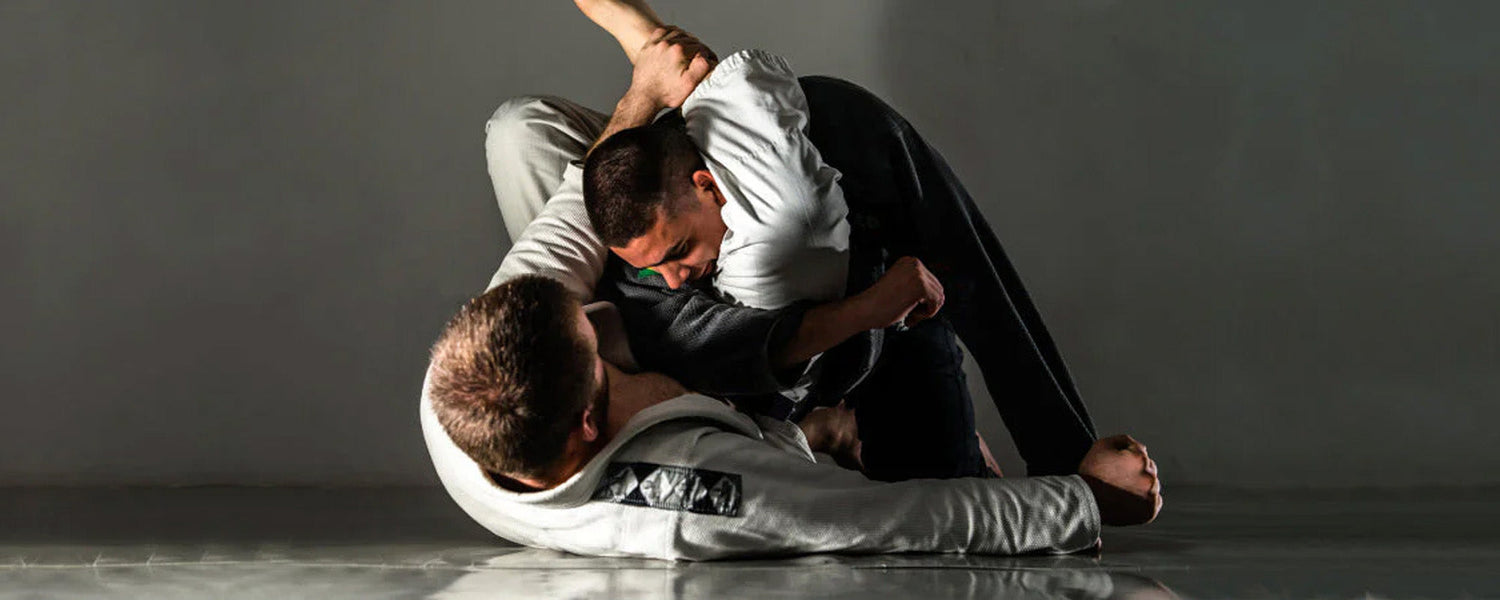Brazilian jiu-jitsu is a grappling-based martial art with different techniques to make its practitioners stand out.
The popularity of BJJ has grown exponentially in recent years. What are BJJ hip injuries, and how will they affect the physical health and game of the BJJ practitioners?
Hip injuries are not common in BJJ. But they are one of the most lethal types of injuries BJJ practitioners suffer. The good news is that there are ways to prevent hip injuries and treatments available if you suffer from one.
Here we will discuss the most common hip injuries in BJJ, how to avoid them, and what to do if you suffer from one.
Table of content
1. What is BJJ?
BJJ, or Brazilian Jiu Jitsu, is a grappling martial art developed in the early 20th century by Japanese immigrant Mitsuyo Maeda, who taught the art to Carlos Gracie. BJJ is known for its emphasis on effective grappling technique and leverage over strength and size, making it an effective martial art.
BJJ is practiced by wearing traditional Gi and No-Gi forms, with competitions divided into weight classes and age divisions. Today, BJJ is widely practiced worldwide and is a popular sport for men and women of all ages.
2. Different Types of BJJ Hip Injuries
BJJ is a high-intensity sport that can lead to several injuries, including hip injuries. The most common BJJ hip injuries are:

2.1. Osteitis Pubis
Osteitis pubis is a condition that can occur in people who indulge in high-intensity activities, such as BJJ, sprinting, running or playing soccer.
In BJJ, the condition is often caused by repetitive imbalance movements and stress on the hip joint. This can happen when someone makes a lot of hip-twisting motions way beyond the mobility range of the hip joint, such as when trying to escape from an opponent's hold. The condition is also seen in people who train hard and don't take enough rest or recovery days after high-intensity training sessions.
Symptoms of osteitis pubis include pain in the groin area, stiffness in the hips, and pain when walking or moving the legs. The condition can be treated with rest, ice, and physical therapy. Surgery is rarely needed.
2.2. Hip Bursitis
Hip bursitis is a hip injury when the bursa (a fluid-filled sac) is inflamed due to irritation and overuse. The work of a bursa is to keep the bones and tendons safe from damage and ensure fluid movement.
You will be more susceptible to hip bursitis when playing BJJ while ignoring all the limits and not taking precautionary measures. It can also happen because of the constant pressure on the hips during training, sparring or rolling. From guard passes to submissions, almost every move in BJJ puts stress on the hips because it is the body's most crucial and biggest joint. This can lead to micro-tears in the tissue, which can become inflamed and cause unbearable pain.
2.3. Contusion (Hip Pointer)
A hip pointer is a bruise of the bone and cartilage that make up the hip joint. It is caused by a direct blow to the hip's side, such as a fall or caught in the bow and arrow choke.
The hip pain in the Jiu-Jitsu athlete may worsen if you ignore the symptoms or when pressure is applied to the area. Symptoms of this injury include hip pain and tenderness at the site of the injury, bruising, swelling, and limited range of motion. Hip pointers can often be diagnosed based on symptoms and a physical examination by a certified specialist.
2.4. Stress Fracture
Bjj hip injuries are becoming increasingly common, mostly because of the lack of proper mobility exercises and going way beyond the limits. A stress fracture is one of them. It occurs due to repetitive stress or overuse, leading to bone cracks in extreme cases.
2.5. Joint Impingement
Joint impingement occurs when the joint is compressed, pinched, or jammed. This can happen when the joint is overworked, such as during BJJ training. An injury, such as a fall, can also cause joint impingement.
Symptoms of this hip injury include pain, swelling, and stiffness. The pain is often worse when the joint is moved. Joint impingement can make it hard to train and compete.
2.6. Snapping Hip Syndrome
Snapping hip syndrome is a condition that can be caused by various things but is commonly seen in people who participate in activities that require a lot of hip movements, such as dancing or martial arts.
The condition is characterized by a sudden, sharp pain in the hip area followed by snapping a tendon or muscle over the hip joint. It can also be accompanied by a popping or clicking sound.
However, it is not a severe hip injury in BJJ, but it can be quite painful and cause discomfort.
2.7. Hip Labral Tear
A hip labral tear is considered a severe injury. The hip labrum is a cartilage piece that helps stabilize the hip joint. When this tissue is torn, it can cause pain and instability in the hip joint.
Treatment for a hip labral tear typically includes rest, ice, and physical therapy. Surgery may also be necessary in some cases.
3. How to Treat a BJJ Hip Injury?
BJJ is a physically demanding sport, and careless training often results in injuries. There are different ways to treat a BJJ hip injury, depending on the severity of the injury.
The most important thing is to get evaluated by a medical professional to get an accurate diagnosis and treatment plan. If the injury is minor, rest and ice may be all that is needed. More severe injuries may require physical therapy or even surgery.
- Rest, ice, and pain medication can help relieve symptoms.
- Physical therapy can also help restore range of motion and strength.
- Surgery is sometimes necessary for more severe injuries.
4. What Can Help You Avoid Hip Injuries?
To protect yourself from hip injuries, try the following suggestions:
One of the best ways to avoid hip injuries is to maintain good flexibility. BJJ puts a lot of stress on the hips, and they need to be able to move freely. Stretching and yoga are great ways to keep the hips flexible.
Another way to avoid hip injuries is to strengthen the muscles around the hips. This includes the glutes, hamstrings, and adductors. Stronger muscles will help support the joints and take some of the stress off of them.
Lastly, it is best to warm up properly before training. This means doing a light jog or jump rope for 5-10 minutes to get the blood flowing and increase body temperature.
5. 8 Exercises To Improve Hip Strength And Mobility For BJJ
If you want to improve your hip strength and mobility for BJJ, then these 8 exercises are a great place to start.
- Glute Bridges
- Hip Thrusters
- Fire Hydrants
- Donkey Kicks
- Lateral Band Walks
- Reverse Lunges
- Side Leg Raises
- Butterfly Stretch
All these exercises are easy to do, and you can add them to your BJJ practices according to the advice of your coach. There is no need to worry about this because physical activities are beneficial to overcome the impact of hip injuries.
6. FAQs
6.1. What Do I Do for Sore Joints After BJJ?
If you're a Brazilian Jiu-Jitsu fighter, you know that sore joints are part of the BJJ grappling sports training. You can ice the affected area for 15-20 minutes. This will help reduce inflammation and swelling.
Make sure to rest and elevate the affected joint as much as possible. All these things will help you recover from sore joints and perform BJJ more passionately.
6.2. Is Brazilian jiu-jitsu Dangerous?
Brazilian jiu-jitsu (BJJ) has become one of the mainstream martial arts in the world. While BJJ is generally considered a safe sport, some risks are associated with it.
So, BJJ is the safest martial art because it has a lower percentage of injuries. After all, direct striking and blows are strictly prohibited in BJJ.
6.3. Can Learning BJJ Increase the Risk of Getting Injured?
As with any physical activity, there is always some inherent risk of injury associated with BJJ training.
7. Takeaways
When participating in BJJ learning sessions, it is essential to know the different types of hip injuries that can occur and take every precautionary measure to avoid them.
However, if you experience any pain or discomfort in your hips, do not waste time and consult with a medical professional or chiropractic for proper diagnosis and treatment.













Leave a comment
This site is protected by hCaptcha and the hCaptcha Privacy Policy and Terms of Service apply.